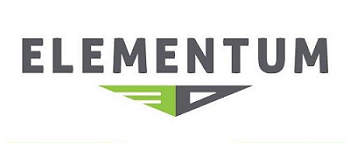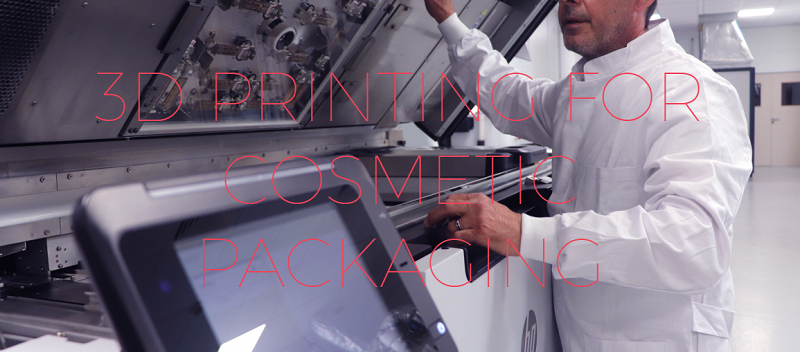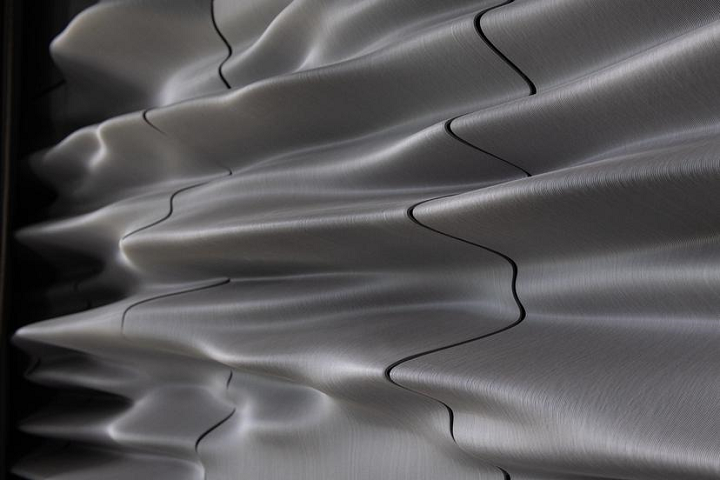3D Printing News Briefs, July 3, 2021: Dyndrite, Arburg & Oryx Additive, TAMUQ, JTC, & CyBe Construction, Elementum 3D & NASA, VBN Components, Phillips Corporation & 3YOURMIND, Albéa, Erpro 3D Factory, & HP, Aectual & Gramazio Kohler Research
We’re covering a variety of topics in today’s 3D Printing News Briefs, including partnerships, materials, AM applications, and more. Keep reading for all the details!
World Economic Forum Names Dyndrite Technology Pioneer
Dyndrite, which makes the first accelerated computation engine to create next-generation digital manufacturing hardware and software, announced that it has been chosen as one of 100 promising Technology Pioneers for 2021 by the World Economic Forum, due to its contributions in the field of advanced manufacturing. For the company, which came out of stealth in 2019, this is a major validation of what it does for the AM industry. Technology Pioneers are early to growth-stage companies from around the world that are involved in using new technologies and innovations, such as AI, IoT, robotics, blockchain, and biotechnology, that could have a major impact on society and business, and this year’s list includes representation from 26 economies on six different continents. Because of Dyndrite’s selection as a Technology Pioneer, the company’s CEO and Founder, Harshil Goel, will be invited to participate at World Economic Forum activities, discussions, and events throughout the year, and the company itself will contribute to the Forum’s initiatives over the next two years.
“We are both humbled and honored to be acknowledged as a pioneer by the World Economic Forum. Additive manufacturing has the potential to transform humanity but requires a new approach in software technology. Dyndrite is revolutionizing the way 3D geometry is created, transformed and transmitted on a computer, and by doing so we empower additive manufacturing to deliver serial production, at scale,” said Goel.
Arburg Inc. & Oryx Additive Partner for Support Removal
PADT spinoff Oryx Additive and top plastic injection molding machine manufacturer Arburg, Inc. are partnering to offer expedited AM support removal and finishing solutions to Arburg Freeformer 3D printer users. Oryx Additives SCA finishing equipment is meant for consistent removal of water-soluble or solvent-based support materials for 3D printed parts, both finely detailed and strong, dense ones, while Arburg specializes in creating functional parts from production-grade injection molding raw materials, but without using a mold, so the two companies are a good fit.
“Our vision at Oryx is to achieve the full potential of additive manufacturing by building a trusting and collaborative partnership with end-use and OEM customers. We are thrilled to partner with one of the most highly acknowledged world leaders in the injection molding industry as they build and expand the Freeformer technology into the additive manufacturing space,” said Keith Jeffcoat, CEO of Oryx Additive. “With Freeformer, Arburg has forged a new path towards industrial 3D printing by enabling the accessibility and use of advanced materials which were not attainable in the past. The combined use of the Freeformer technology and the tried-and-true SCA product family allows for reliable printing and finishing expected of industrial end-use parts.”
First Concrete 3D Printed Sculpture in Qatar
The first 3D printed concrete structure in Qatar, depicting the Flag of Glory—a representation of diverse hands united in holding up the country’s flag—was recently created in Qatar’s only concrete 3D printing facility, which was set up thanks to a partnership between Texas A&M University at Qatar (TAMUQ), Al Jaber Trading and Contracting (JTC), and Cybe Construction. As many others around the world have realized, 3D concrete printing has many benefits, like geometric freedom, improved onsite safety, reduced manpower, and less material consumption and waste. While the team had a lot to learn for this project, the sculpture was apparently fabricated very quickly, and would have taken 12 to 18 hours and at least five people if made with conventional methods. The group’s main goal is to recycle demolished construction waste back into the construction sector using 3D printing, and developing local printing materials, and is being funded by the Qatar National Research Fund (QNRF), in partnership with Hamad Bin Khalifa University (HBKU), JTC, Qatar’s Public Works Authority Ashgal, Seero Engineering, and Turkey’s Hacettepe University.
“With a structure like this, conventional construction practices would require designing and making a mould first, 3D printing allows us to skip that step completely allowing considerable cost savings. TAMUQ and JTC operators are now fully trained to 3D print any complex object using concrete locally,” said Engr. Mohammed Al Hamayda, JTC’s General Manager.
“Our ultimate mutual goal is to participate effectively in developing green construction practices in Qatar in line with its National Vision 2030. The possibilities with 3D printing are endless and we look forward to partnering with the public and private construction sector as well as academic institutions to deliver rapid and sustainable construction in Qatar.”
Elementum 3D Receives NASA SBIR Grant
Advanced 3D printing materials company Elementum 3D has received an SBIR grant from NASA to develop soft magnetic 3D printing materials for creating electric, hall-effect propulsion thrusters, or HETs, for use in outer space. The company, which has previously worked with NASA, submitted a proposal for the grant, “Materials and Processes for Additive Manufacturing of Large Diameter Hall-Effect Thrusters,” and was successful. According to Elementum 3D, current magnetic materials and manufacturing methods are not ideal for producing large-diameter HETs with the necessary amount of mechanical strength and desired magnetic properties. Cobalt-iron soft ferromagnetic (Co-Fe) alloys are good for soft magnetic applications like HETs because of their high strength, curie temperature, magnetic saturation, and permeability, but they have low ductility and aren’t great for large-format printing
According to the technical abstract, “Elementum 3D is proposing to develop an additive manufacturing (AM) process and material feedstock, suitable for fabrication of large-diameter HETs, from cobalt-iron based soft magnetic material. The ability for AM to produce these large structures directly from powder feedstock would overcome the unavailability of sufficiently sized iron-cobalt billets. Other AM advantages for production of Co-Fe soft magnetic products include, a favorable fly-to-buy ratio, improved design freedom, and an increase in thrust-to-weight ratio.
“The principle objective of the Phase I effort is to research, develop, and demonstrate a soft magnetic feedstock material and additive production process that is suitable for production of large-diameter Hall-effect thrusters, meeting the magnetic and mechanical performance targets.”
US Military Places Breakthrough Order with VBN Components
The interest of the United States Armed Forces has been piqued by the super wear-resistant materials developed by Swedish company VBN Components. As such, the company has received what it calls its first breakthrough order from the US military, which will be evaluating three of its Vibenite metal alloys and testing them for several applications. The selected Vibenite materials offer high performance and long lifetimes to the near-net-shape metal components 3D printed out of them, so it makes sense that the military is interested. VBN Components, founded in 2008, is in the middle of a major expansion phase, and has identified North America as a strong and interesting market, so this US military order is well-suited and well-timed.
Johan Bäckström, the CEO of VBN Components AB, said, “This order is of significant importance to us as it may lead to follow-up orders from sub-suppliers of the United States Armed Forces, but also from many other actors, for instance in Europe.”
Phillips Corporation & 3YOURMIND Partner for Warfighter Innovation
Speaking of the military, the Phillips Corporation, a service provider and manufacturing partner to the US Federal Government, has announced a partnership with 3YOURMIND to improve warfighter innovation and combat readiness. To do this, Phillips, which is working to address the US Government’s strategic initiative and DoD’s logistics strategy to modernize the national defense system with 3D printing, is adopting 3YOURMIND’s suite of software solutions in order to increase workflow capabilities, digitize the warehouse, and identify AM-ready spare parts for the military. These parts can then be 3D printed on-demand at FOBs around the world, which will help US troops face emergency situations and complex issues where time is of the essence.
“3YOURMIND and Phillips Corporation share a similar vision to reimagine the supply chain. Our Agile PLM software, equipped with a sophisticated part identifier tool, is a secure program that provides data transparency and streamlined communications that enable defense organizations to take decisive actions,” stated William Cuervo, Senior Business Development Manager USA at 3YOURMIND.
Albéa & Erpro 3D Factory Use HP’s MJF for Cosmetic Packaging
Albéa, the #1 cosmetic packaging wholesaler, is working with startup Erpro 3D Factory to develop cosmetic packaging applications that use HP’s Multi Jet Fusion (MJF) technology. The packaging company adopted 3D printing through a business partnership with the startup two years ago, and now, the first generation of cosmetic parts, designed and printed using the HP platform’s advanced capabilities, are in the final stages of development, with a product launch coming soon. The three worked together in the first phase of their joint partnership to design and produce applications that hold up under the regulations of the cosmetics industry, are extremely detailed and customizable, and offer a high level of quality and reliability. Specifically, Erpro customized its own manufacturing processes in order to support the industrial production of Albéa’s small pieces.
“As we’ve seen in consumer goods and other markets such as auto and healthcare, the mass production of 3D printed applications has the potential to truly disrupt industries. This breakthrough work with Albéa and Erpro opens up amazing possibilities for leading cosmetics brands around the world,” said Virginia Palacios, Head of Multi Jet Fusion Solutions Management, HP Personalization and 3D Printing. “The advanced capabilities enabled by Multi Jet Fusion enable incredibly detailed design, precision quality and best-in-class performance for parts like cosmetics brushes and more.”
Aectual Introduces 3D Printed Acoustic Sound Diffusion Panels
Finally, Aectual collaborated with Swiss architectural design group Gramazio Kohler Research ETH to develop the latest in acoustic interior design: 3D printed sound diffusion panels, made from 100% circular and bio-based material, that can be made-to-measure and customized to match any interior. These panels are not only beautiful-looking, but they also help to mitigate noise, balance sound, and reduce naturally occurring reverberation and echo, in both commercial and residential spaces, such as libraries, offices, hotel lobbies, and private homes. Rather than dampening spatial acoustics, the Aectual panels actually diffuse and soften the edges of hard sounds, thanks to their parametric design script with an undulating surface that has a lovely aesthetic, as well as dispersing sound waves. The company says that its panels absorb no less than 50% of the reflected sound waves in various environments. Additionally, Aectual directly recycles the plant-based plastics it uses to print the sound diffusion panels and reprints them into other new products.
“Acoustics and architecture are directly linked with each other. Although sound is not visible, the geometry of a room and its acoustic characteristics are intrinsically coupled. This connection between aesthetics and acoustics provided the point of departure for our team to create beautiful acoustic panels that are specifically designed to give rooms a pleasant and soft feeling. We are thrilled to work with Aectual as they bring our designs to life,” said Professor Matthias Kohler at Gramazio Kohler Research, ETH Zurich.
You can purchase Aectual’s panels directly via the webshop, or work with the architects to create a made-to-measure solution.
Subscribe to Our Email Newsletter
Stay up-to-date on all the latest news from the 3D printing industry and receive information and offers from third party vendors.
You May Also Like
3D Printing News Briefs, April 13, 2024: Robotics, Orthotics, & Hypersonics
In 3D Printing News Briefs today, we’re focusing first on robotics, as Carnegie Mellon University’s new Robotics Innovation Center will house several community outreach programs, and Ugogo3D is now working...
Rail Giant Alstom Saves $15M with 3D Printing Automation Software 3D Spark
3D Spark has entered into a three-year deal with the rail giant Alstom. Alstom, a transport behemoth with annual revenues of $16 billion, specializes in the manufacture of trains, trams,...
Meltio Expands Global Reach with New Partnerships in the Americas and Europe
Spanish 3D printing manufacturer Meltio has expanded its sales network across the globe. With the addition of three new partners in the United States, Brazil, Argentina, and Italy, Meltio aims...
3D Printing Webinar and Event Roundup: April 7, 2024
Webinars and events in the 3D printing industry are picking back up this week! Sea-Air-Space is coming to Maryland, and SAE International is sponsoring a 3D Systems webinar about 3D...







































